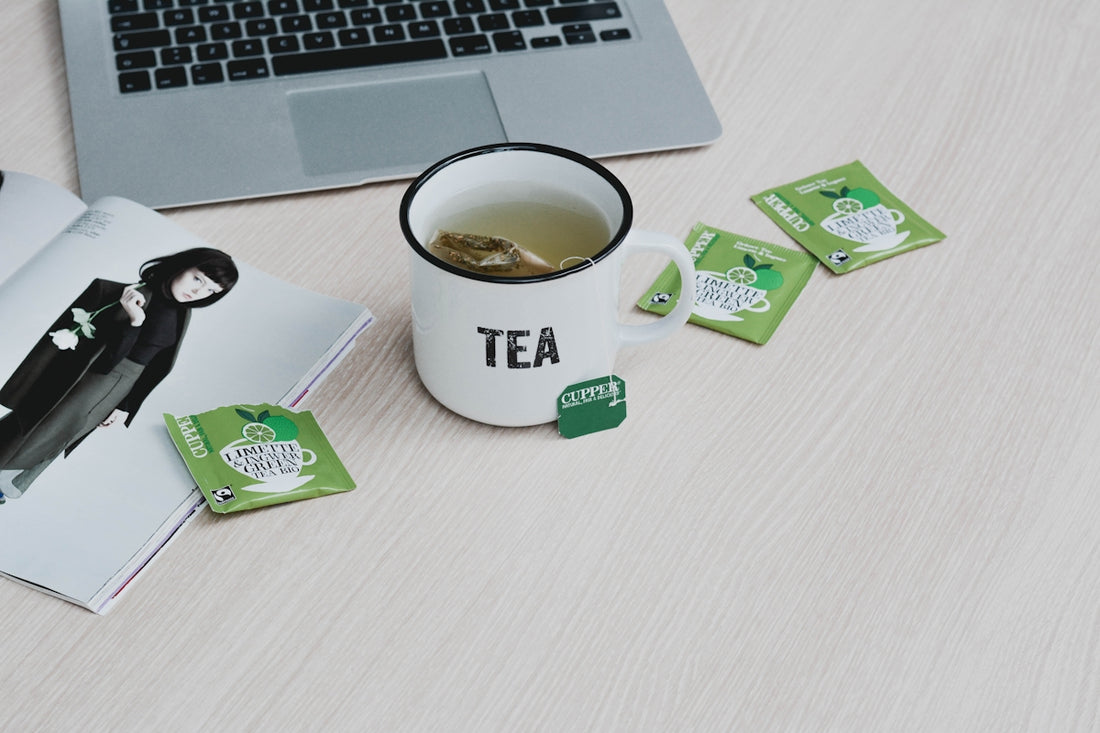
Solving the Caffeine Puzzle: Oolong Tea vs Green Tea
In the realm of teas, the choice between oolong tea and green tea often leads to a stimulating debate, particularly when caffeine content is at the heart of the discussion. As tea enthusiasts and newcomers alike seek to unravel this caffeine conundrum, understanding the nuances of these two popular types of tea is essential. Both oolong and green teas are celebrated for their unique flavors and health benefits, yet they differ significantly in terms of caffeine levels and other properties. At TeaStart, we're committed to helping you explore the world of tea with a deeper understanding. In this guide, we'll delve into the intricacies of oolong tea caffeine, compare it with green tea, and introduce some exquisite tea products to enhance your tasting journey.
Understanding Caffeine in Tea
Caffeine is a natural stimulant that affects the central nervous system, helping to alleviate tiredness and improve focus. However, the caffeine content in teas can vary significantly based on several factors including the type of tea, how it’s processed, and how it’s brewed.
Factors Affecting Caffeine Content:
- Tea Type and Processing: The level of oxidation, roasting, and processing significantly impacts caffeine levels. Generally, more oxidized teas contain more caffeine.
- Leaf Particle Size: The smaller the tea particles, the higher the caffeine levels likely are when brewed.
- Brewing Method: Longer steeping times and higher temperatures can extract more caffeine from tea leaves.
Given these factors, let’s explore how oolong and green teas measure up against each other in terms of caffeine content.
Oolong Tea Caffeine Content
Oolong tea, often celebrated for its complex flavors that range from sweet to toasty, occupies a middle ground between green and black teas in terms of oxidation. This unique processing procedure also affects its caffeine profile, which typically falls between that of green and black teas.
Typical Caffeine Levels:
- Oolong Tea: Generally contains about 37 to 55 mg of caffeine per 8-ounce cup.
The nuanced flavors of oolong tea are well exemplified in products like the Wu Ye Dancong and Honey Orchid Dancong Oolong Tea, offering an intricate blend of aroma and taste, perfect for those who wish to explore oolong tea's vast spectrum.
Green Tea Caffeine Content
Green tea is esteemed not only for its fresh flavor but also for its potential health benefits and relatively lower caffeine content. Unlike oolong, green tea undergoes minimal oxidation, preserving much of its natural green color and high antioxidant levels.
Typical Caffeine Levels:
- Green Tea: Typically has about 20 to 35 mg of caffeine per 8-ounce cup.
Although green tea generally offers lower caffeine content compared to oolong, it doesn't compromise on the invigorating experience it provides. This balance makes it a favorable option for those looking for a gentler energy boost.
Oolong Tea vs Green Tea: A Comparative Insight
When comparing oolong tea vs green tea, it’s essential to consider more than just caffeine content. Both teas boast a range of flavors, health benefits, and diversities that can vastly influence personal preference and consumption habits.
Flavor Profile Comparison:
- Oolong Tea: Known for its broad flavor palette, oolong tea can vary from floral and sweet to robust and full-bodied, influenced heavily by its degree of oxidation and region of origin.
- Green Tea: Offers fresher, lighter flavors, often described as grassy or vegetal, with a slightly astringent finish due to its minimal processing.
Health Benefits:
- Antioxidants: Both teas are rich in antioxidants, which help to combat oxidative stress in the body and may reduce the risk of chronic diseases.
- Cardiovascular Health: Studies suggest that oolong and green teas can contribute to improved heart health by lowering bad cholesterol levels.
- Weight Management: The thermogenic effects of caffeine in these teas, combined with their polyphenol content, may aid in weight management.
Exploring Oolong and Green Teas with TeaStart
For those interested in exploring the diverse flavors of oolong and green teas, TeaStart offers curated experiences that allow you to enjoy these teas in their true essence. Consider embarking on a tasteful journey with the Scent Alchemist Kit - A Curated Tea Experience or the The Explorer's Journey Box - A Diverse Tea Experience, designed to broaden your tea horizons and refine your palate.
Both kits offer an assortment of high-quality teas, including variations of oolong and green teas, allowing you to appreciate their unique characteristics fully. Whether you're a seasoned tea drinker or a curious newcomer, these boxes provide the perfect opportunity to deepen your understanding and enjoyment of tea.
Conclusion
The debate between oolong and green tea, especially regarding their caffeine content, does not have a one-size-fits-all answer. Your choice may ultimately depend on your personal taste, caffeine sensitivity, and health considerations. Regardless, both oolong and green teas offer splendid opportunities to savor rich flavors while receiving numerous health benefits.
By integrating oolong and green teas into your daily routine, you not only experience their distinct tastes and mild stimulation but also embrace a tradition that has been cherished for centuries. Visit TeaStart to explore an impressive selection of teas and elevate your tea-drinking experience today.
